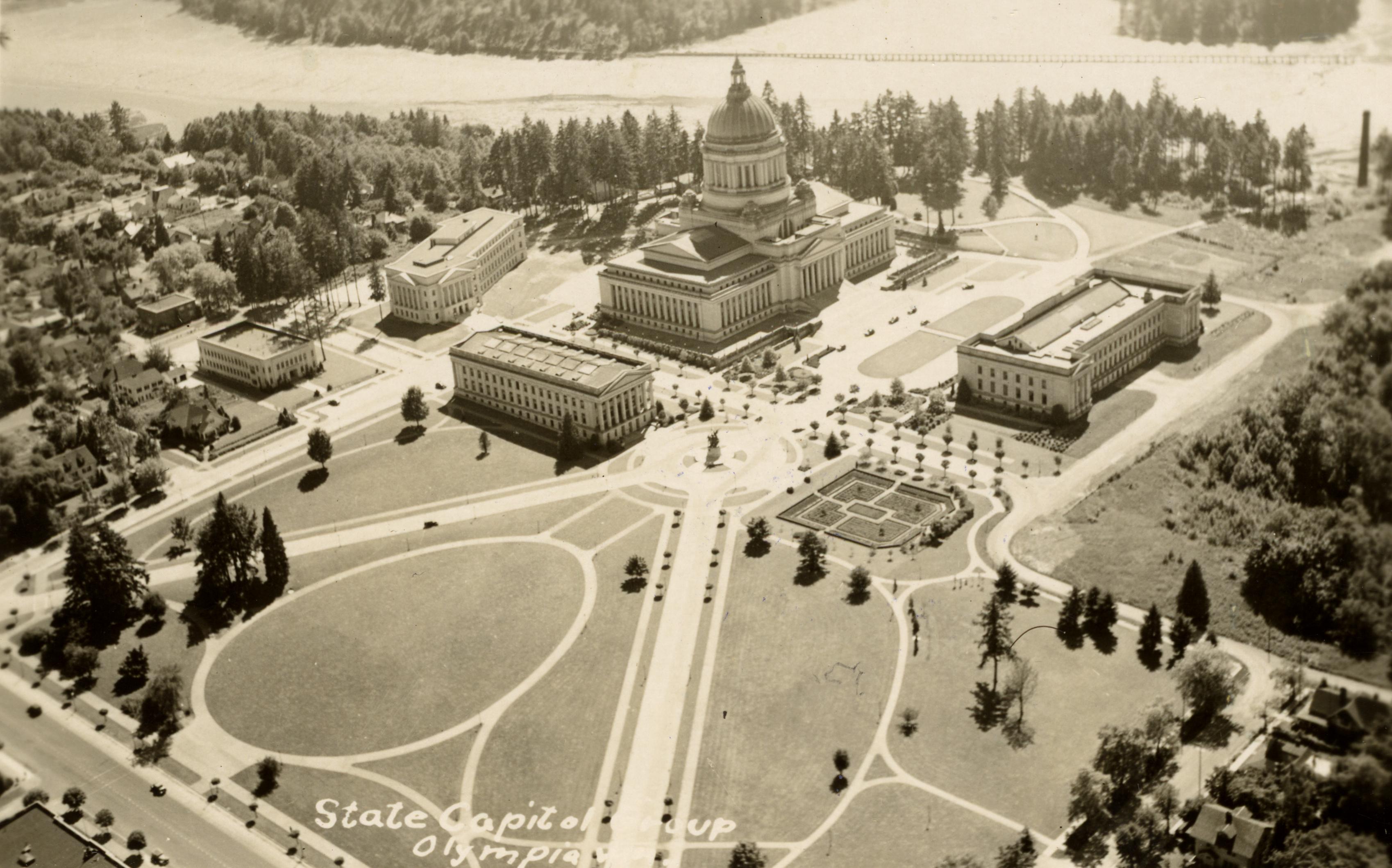National Historical District
In 1979, a 55-acre portion of West Capitol Campus became a National Historical District due to its cultural significance, long history, and distinct buildings and landscape designs.

Unique features of the district
The renowned Olmsted Brothers designed the area's landscape, and architects Walter Wilder and Harry White designed the iconic buildings you see today.
Notable features included in the original 1979 National Historical District listing include the:
- Temple of Justice, completed in 1920
- Insurance Building, completed in 1921
- Legislative Building, completed in 1928
- Public Lands Building (now called the Cherberg Building), completed in 1937
- Winged Victory Monument, built in 1938
- Totem Pole (no longer on campus), gifted in 1940
- Public Health-House Office (now called the O'Brien Building), completed 1940
- Replica of the Tivoli Fountain in Denmark, built in 1953
How we manage the district
The National Historical District is managed by the Department of Enterprise Services (DES).
Our teams perform routine maintenance in the area – clean building exteriors, make repairs, and upkeep the landscape – to keep the district in pristine condition.
Larger projects, such as remodeling parts of the Temple of Justice, are done through legislative action and funding.
What is a National Historical District?
Not just any historical property can be called a National Historical District. This designation is only granted after careful consideration and evaluation using the National Register Criteria for Evaluation, and involves examining the property’s age, significance, and integrity.
Age and integrity
- Is the property old enough to be considered historic (usually at least 50 years old)?
- Does it still look the way it did in the past?
Significance
- Did important past events and activities occur on the property?
- Did important people from the past live or do business or other activities on the property?
- Is the property related to significant architectural history, landscape history, or engineering achievements?
- Does the property provide an opportunity to investigate our past?
Nomination
Properties are nominated to be reviewed by the state’s historic preservation office and the state’s National Register Review Board. This process will take at least 90 days.
Nominations, with certifying recommendations from the state, are submitted to the National Park Service in Washington, D.C. for final review and listing by the Keeper of the National Register of Historic Places. The National Park Service decides whether the property gets listed within 45 days.
About the National Register of Historical Places
The National Register of Historic Places is the official list of historic places in the U.S. deemed worthy of preservation. It was created after the National Historic Preservation Act of 1966.
The National Park Service's National Register of Historic Places is part of a countrywide program to identify, evaluate, and protect America's historic and archeological resources.

